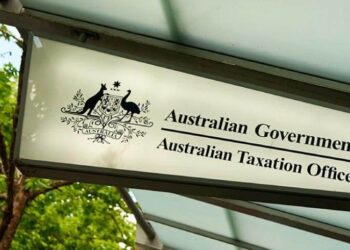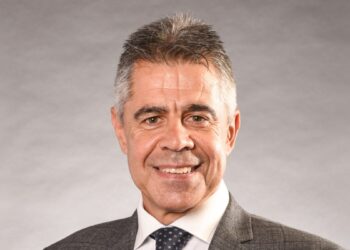In a speech to the Liberal Party federal council meeting in Canberra on Saturday, Prime Minister Scott Morrison revealed the government had extended the 50 per cent temporary reduction in superannuation minimum drawdown requirements for a further year to 30 June 2022.
With many retirees and SMSFs having been hit by losses in financial markets during the coronavirus pandemic, the government had reduced the minimum annual payment required for account-based pensions and annuities, allocated pensions and annuities, and market-linked pensions and annuities by 50 per cent for the 2019–20 and the 2020–21 financial years as part of its COVID relief.
Mr Morrison said the new measures to extend it to 30 June next year will provide greater flexibility and enable greater self-sufficiency for retirees.
“For many retirees, the significant losses in financial markets as a result of the COVID‑19 crisis are still having a negative effect on the account balance of their superannuation pension,” the Prime Minister said.
“This extension builds on the additional flexibility announced in the 2021–22 budget. The Morrison government will continue to support retirees as part of our plan to secure Australia’s economic recovery from COVID‑19.”
As per the current rules, Heffron head of technical and education services Lyn Formica said it is expected the 12-month extension will apply to account-based pensions (including transition to retirement income streams), allocated pensions (including transition to retirement pensions), and market-linked pensions (also commonly called term-allocated pensions).
She noted it is also important to consider that different drawdown rates apply to allocated and market-linked pensions. As with the current rules, it is also not expected the extension will apply to lifetime or life expectancy pensions.
While this recent announcement is simply an extension of the current temporary rules, in order to ensure the optimal outcome for clients, Ms Formica said it is important to understand that the legislation halves the drawdown rates themselves.
For example, the normal 5 per cent drawdown factor for the recipient of an account-based pension aged 65–74 is now 2.5 per cent.
“Simply halving the ‘normal’ payment amount itself, rather than rate, will often give a different result. While the difference may be small, it can result in a pensioner inadvertently failing the minimum pension rules,” Ms Formica reminded in a blog.
“There is no halving of the maximum applicable to transition to retirement income streams or marked-linked pensions.
“Meanwhile, the current $100,000 per annum threshold for market-linked pensions is also not halved, and it is also important to note this threshold (technically known as the ‘defined benefit income cap’) will be indexed to $106,250 on 1 July 2021.”



Why is it that ATO people always go on about the hospitals we supposedly pay for yet the whole economy for two years bas been put on hold for want of ICU beds? This “client” is not a happy little taxpayer.
The man has no sense of propriety. Government announcements should be made to Parliament or at least by responsible Ministers, not to Party meetings.
one needs to be aware that a 50% reduction in the drawdown amounts for account based pensions in any one year (let alone 3 years) will increase the capital account for the following years resulting in an increase of the pension amounts going forward
And recently the government was concerned that retirees aren’t spending and are hoarding their super and are wickedly using it for estate planning purposes, and now they go the extra step to facilitate just this!
It’s a basically cost free bribe to Retirees to say how different LNP are to Labor who wanted to steal franking credits at last election.
And also a small try to appease very angry massively over regulated, strangled Advisers.
Plus doesn’t new to be approved by Labor or cross bench.
Pure politics at play here.
Pre Election play here.
Pension drawdown is about first from the income earned from the capital, then from capital if income from it is insufficient. Everyone knows, or should, dividend/interest/income are down not up, particularly interests. Share market going up is partly due to low interest rates forcing up yield play and the increasing investment risks. This is a double hit on retired people’s savings. Minimum drawdown should be more related to income generating capacities and not the capital. QE induced low interest rate is not free market in operation. It also destroys the risk free bench mark for investment risk comparisons.
Capital is meant to be consumed in pension phase. Its not supposed to exist in perpetuity until death.
I’m glad you’re not my adviser with that attitude
Super was not intended to be a tax haven for the old and rich to pass money to their children as inheritance.
I agree. I am glad the government has stopped people from using super to hide excessive amounts of money from tax.
If people can afford to pay taxes to fund the hospitals, roads and other infrastructure that they use, then they should help pay for it.
What’s the difference if it’s superannuation, or 15 rental properties and a $5m house. There will always be assets to pass on, most of which will be subject to tax in the hands of the beneficiary…….including super death benefits. Not really much of a tax haven for inheritance storage.
You are kidding right?
If structured correctly, there could be zero tax on disposing the assets and the payment of the super death benefit. Plus the zero percent tax paid on income in the years that the member’s balance is in pension phase.
If the assets were in the personal name, the CGT on disposing income producing assets would be greater than zero and the income generated in the years leading up to death would be taxed at their personal tax rates.
Why don’t make it permanent? I do not hear a lot of complaints from the pensioners about the reduced minimum amounts. They know they can withdraw more if they need to. Let the people who are ‘in the system’ make those decisions.
This may sound a bit irrational, pension minimums should not exist at all. To encourage pensioners to withdraw from a tax-free environment, all income should be taxable and the pension exempt income should be equal to pension payments made from the fund. This will solve the complex TBA issues and tax calculations.
It’s their money let them do with it what they want to and rack off.
Barry, removing the pension minimums allows for more flexibility by members, not less. Tax would only be paid on income if the taxable income exceeds the pension payments withdrawn. They can do what they want.
It will also allow people to have over $1.6mill in a tax-free environment if they are willing to take out pension payments equal to their taxable income. For a fund that wants to invest in low income producing assets, such as cash, then they would only need to take out a low percentage of their assets (currently less than 2%) to cover the taxable income.
Many super funds have lots in cash, at low interest rates. A rising sharemarket does not provide cash to pay a pension, unless some shares are sold. Many super fund members need a lot of education about the need to have a diverse portfolio which allows for liquidity.
if the funds have lots of cash then they shouldn’t have a problem making the pension payments.
Some people forget that many SMSF in pension phase rely more on cash deposits for income and interest rates are very low. Just a thought.
Interest rates were low before covid…
Don’t they have shares and get dividends? If they’re relying on cash deposits why are they even in a SMSF?
Not that I’m complaining, but it seems a bit odd given that both Australian and overseas share markets are at an all time high. If we can get a 50% reduction approved when markets are setting records we can presumably just get one whever we want now?
Surprised to see this given the way the market has recovered recently…